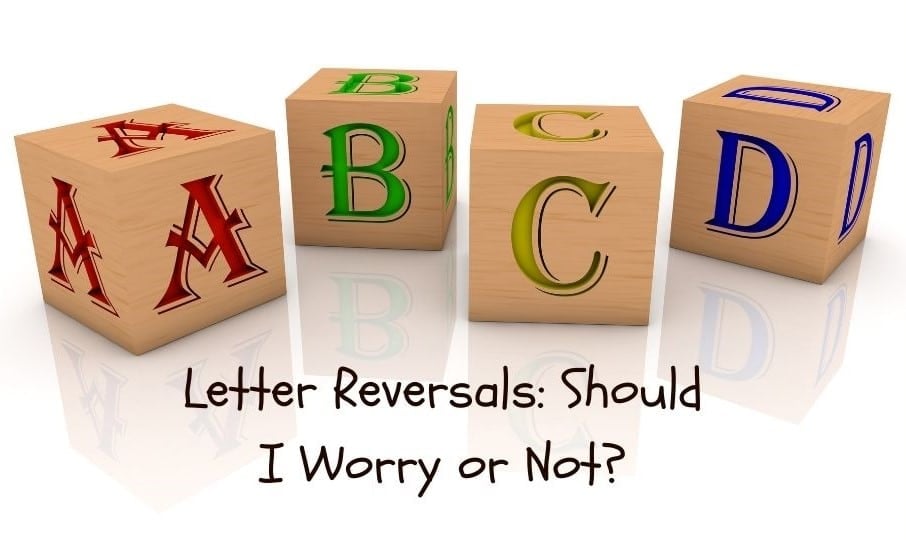
Hello!
Should I be worried if my five-year-old daughter writes certain letters in reverse, like s facing the other way? Or when she writes a b as a d?
Pam
Hello Pam
Thank you for your question.
Learning lowercase letters can be confusing for many children, especially the letters b, d, p, and q. When you think about it, it’s not surprising that kids often mix them up. After all, most objects don’t change what they are just because you flip them around or turn them upside down!
Letter reversals experienced by young children are often said to be “totally normal” until after age seven, and their parents are told, “Don’t worry,” unless they continue past second grade. This appears to be accepted as fact, but it raises questions: if your child were saying, “I eated my lunch,” would you immediately model the correct grammar, or would you not worry about it until age seven? If your child were practicing a math “fact,” “2+3 = 8,” would you correct them or not worry and wait until their seventh birthday? Are letter reversals different?
Reversals of b and d are one of the most common problems associated with reading and writing, and if this problem persists, it could have one of two causes:
Visual processing deficits
Reversals of b and d might be caused by a visual processing deficit, specifically an inability to interpret position in space.
Position in space is the ability to perceive an object’s position in space relative to oneself and the direction in which it is turned, for example, up, down, in front, behind, between, left and right. Regarding discriminating between a b and a d, the directions left and right are especially important.
The human body consists of two halves: a left side and a right side. The human brain also has two halves connected by the corpus callosum. Thus, a person will inevitably interpret everything in terms of their sidedness. However, children who have not yet learned to interpret correctly in terms of their sidedness and who have not learned to distinguish appropriately between left and right, will inevitably experience problems when they are in situations where they are expected to interpret sidedness. One such situation where sidedness plays a vital role is when a person is expected to distinguish between a b and a d. It is clear that the only difference between the two letters is the position of the straight line — it is either left or right.
Memory aids don’t work
It is important to note that people confused about left and right cannot use mnemonics or memory aids while reading, as is often advised. Children, for example, are often advised to remember that “left” is the side on which they wear their watch. This never works to improve reading ability. It can be compared to learning a language. One cannot speak a foreign language if one only has a dictionary in that language. One has to learn to speak it. In the same way, one has to learn to interpret sidedness. As with all the other skills foundational to reading, the ability to distinguish between left and right must be drummed in so securely that the person can apply it during reading and writing without having to think of it at all.
Auditory processing deficits
An auditory processing deficit might also cause b and d reversals, specifically an inability to discriminate between the sounds ‘buh’ and ‘duh’.
Auditory processing refers to the ability of the brain to interpret and create a clear impression of sounds.
Regards
Sue
More about Sue
Sue is an educational specialist in learning problems and has a B.A. Honors in Psychology and B.D. degree. Early in her professional career, Sue was instrumental in training over 3,000 teachers and tutors, providing them with the foundational and practical understanding to facilitate cognitive development among children who struggle to read and write. With over 30 years of research to her name, Sue conceptualized the Edublox teaching and learning methods that have helped thousands of children who were struggling to read, learn and achieve. In 2007, she opened the first Edublox reading and learning clinic, and now there are 30 Edublox clinics internationally. Her proudest moments are when she sees a child who had severe learning difficulties come top of their class after one or two years at Edublox. Sue always takes time to collect the ‘hero’ stories of students whose self-esteem is lifted as their marks improve.
